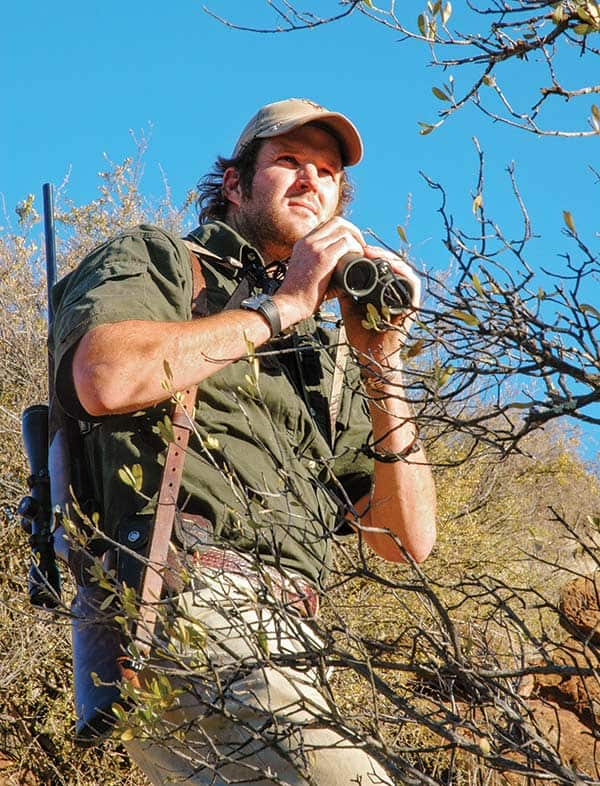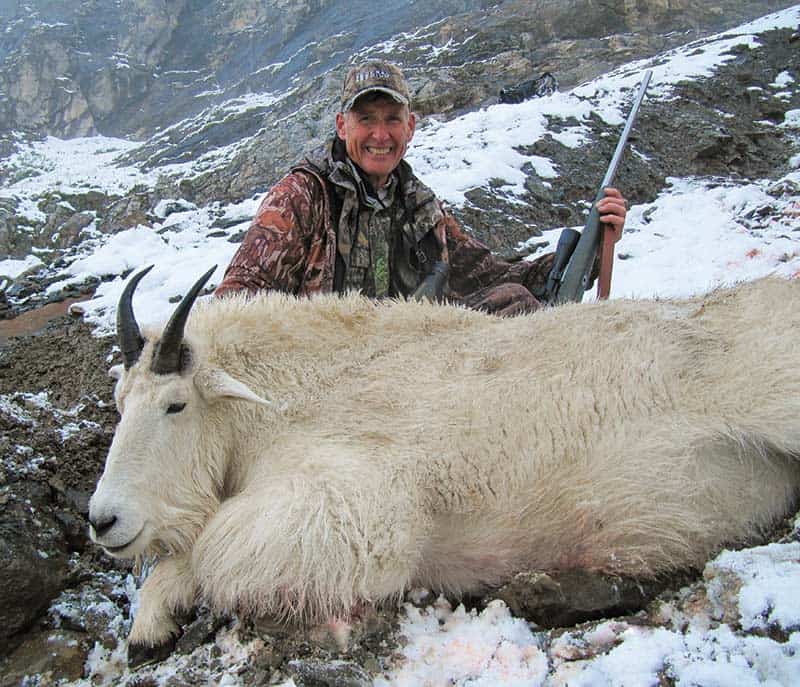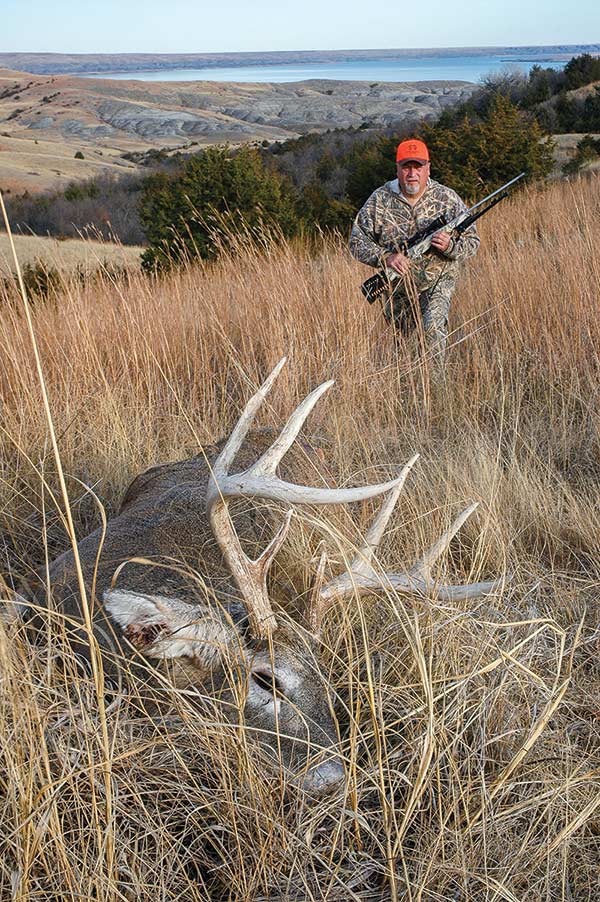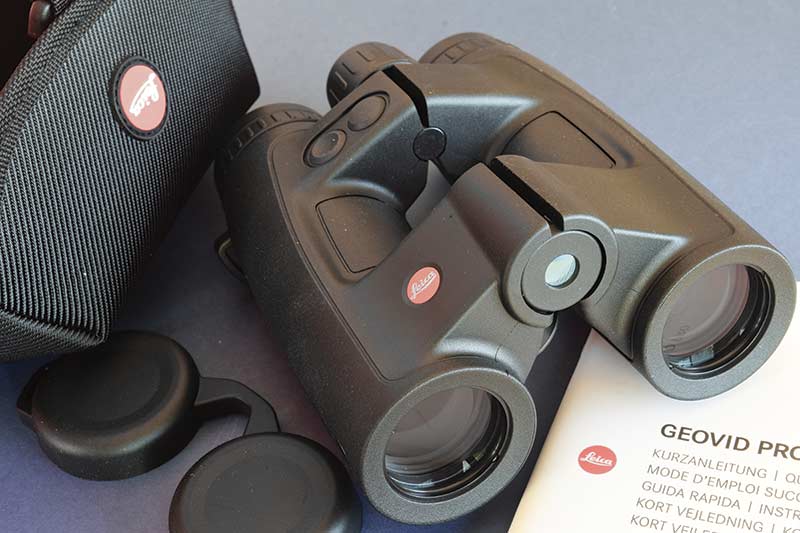Leica Range-Finding Optics
Game-changing tool for the hunt
In 1992 Leica announced a binocular unlike any that had gone before. The 7×42 Geovid boasted an electronic compass and a laser rangefinder useful to 1,500 yards. It was heavy. At $6,000, it was costly. And it came to eye clumsily, but Leica’s Geovid pioneered a new design making a traditional implement much more useful.
Before optical sights, hunters managed to kill game without using rangefinders. If the brass bead dwarfed the deer, the shot was too long. When the sight fell just shy of spanning the chest, shading high was often allowance enough. A bead comfortably inside the ribs called for dead-on aim.
Changing Technology
Rifle scopes added magnification, with no post, blade or leaf to hide the target. A dot reticle was a rangefinder too. The dot in my 2-1/2x Lyman on a Mauser in .300 H&H subtended 3 minutes of angle. If it covered half the depth of a big buck’s chest, the deer was about 300 yards off.
Palm-size laser rangefinders had been around for several years before Leica squeezed one into a binocular the shape of a land mine. These pocket instruments were lighter, less costly and more compact than early military rangefinders. They sent a laser beam to the target, which bounced it back. The beam’s travel was timed by an internal clock. Range, in yards or meters, then appeared in a liquid crystal display (LCD). Bushnell peddled these units by the gross, to golfers as well as to shooters. Other firms piled on. Despite their sophistication, laser rangefinders were not difficult to manufacture. No heavy machine work or big, expensive glass. But on a hunt, with a shot in the offing, you needed three hands to use one. After spotting game, you juggled binocular and rifle to get a read on the distance, then juggled again to rid your hands of optics to take aim.
Leica has been making binoculars since 1907, constantly improving them for people who value performance above price. My first look with a Trinovid was like a view through new eyes — though this particular Leica series had been around since 1958. The ideal binocular, it seemed to me 30 years ago, would handle like a Trinovid but feature the Geovid laser. Not long thereafter, Leica trotted out just such a glass, adding fluoride lenses for sharper contrast.
Then in 2013, the Geovid HD-B stretched its reach with 0.2-second accuracy to 1,800 yards! Both 8×42 and 10×42 versions boast Leica’s Advanced Ballistic Compensation (ABC) system. Programmed for one of 12 common bullet arcs — or data from your load on the provided 2-MB microSD card — this electronic brain computes vertical angle, temperature and barometric pressure to show proper hold for any shot, or the number of clicks on your elevation dial to compensate for bullet drop. A magnesium frame keeps weight of the Geovid HD-B to less than 34 oz. And it retails for less than half the price of the first Geovid!
Walk A Curved Line
“But the barrels aren’t straight,” I observed at its introduction.
Leica’s Terry Moore smiled past my perception of the obvious to say: “It’s a Porro prism glass — a Perger Porro prism, easy to mistake for a roof-prism bino if you miss that gentle sweep.” He explained a small LED box in the Geovid’s field is the reticle. “It lights up when you press the range button. A second press gives you the range. Hold the button for two and a half seconds to enter scan mode and get serial reads on moving targets. The display adjusts for brightness automatically in changing light.”
A 3-volt Lithium CR2 battery powers the Geovid HD-B. It’s good for about 2,000 range reads at 68 degrees F (20 C). By the way, the microSD card is also housed in the under-barrel battery cavity. Each binocular comes with tweezers so you can remove it easily! The laser unit resides in the forward hinge.
The Geovid HD-B’s dual diopter rings deliver a 4-dot adjustment range, plus and minus. For easy viewing with and without eyewear, twist-out eyepieces have four click-stops. Lenses are phase-corrected; Leica’s AquaDura coating sheds water from exterior glass. A field-worthy bino, the HD-B is proofed in temperatures down to -13 degrees F (-25C). It’s water-submersible to a depth of 16 feet.
The Geovid has kept pace, optically, with other Leica binoculars. Images it delivers are every bit as crisp, brilliant and color-true.
The marvel of a range-finding bino drew competition as quickly as it did customers. Swarovski’s EL Range and the Zeiss Victory RF (both in 8×42 and 10×42 versions, scaling 32 oz.) are similar in capability and price. So how to choose.
Even More
Leica pulled away from the pack this year, with the new Geovid Pro. Essentially a refined Geovid HD-B, it’s available in 30 ½-oz. 8×32 and 10×32 versions. I’ve come to prefer 32mm front glass over 42mm for all my hunting. The marginally lighter weight is less important to me than the reduced length and bulk. I can steady the binocular more easily with one hand when there’s time for only a quick look.
I can tuck the glass more easily in my jacket during a shower or blizzard and to keep it secured on a crawl. The 4mm exit pupil of an 8×32 is enough for all but the dimmest shooting light. Sure, at dusk the 5mm EP of an 8×42 has the official edge. I find it less a practical advantage than the 32’s modest size.
The new Geovid Pro is Bluetooth-compatible. The recessed menu button next to the convex range button gives you Bluetooth access. You can install the Leica Ballistics App from Apple’s App Store or Google’s Play Store. While this feature is truly wondrous, I’m most impressed by what makes the new Geovid Pro superior by traditional measure: Optics that help you see detail you’d miss with lesser glass, and — though a laser isn’t yet traditional — instant, precise ranging.
While knowing target distance can help you make an accurate shot, reading the range to objects on the landscape can be just as valuable when an animal is too far for a sure kill or its vitals are hidden. Determining yardage between landmarks, and from a prospective shot site to the target, you’ll better plot a sneak. You’ll know where to look for “waypoints” when terrain obscures them, where you’re likely to be exposed to the game and roughly how much time to allow for each leg of a long approach.
Yes, a top-shelf laser-ranging binocular is expensive. A modern battleship costs more than did a wooden-hulled frigate with black-powder cannons poking from between iron slabs. But with outfitted hunts for Alaskan goats and Dall’s sheep, or even big elk and moose trips, priced well into five figures, how much is too much for a binocular showing you more game? And, for the one shot you might get all week, delivers in a wink the information you need for a lethal hit?
MSRP: $2,899
LeicaCameraUSA.com








